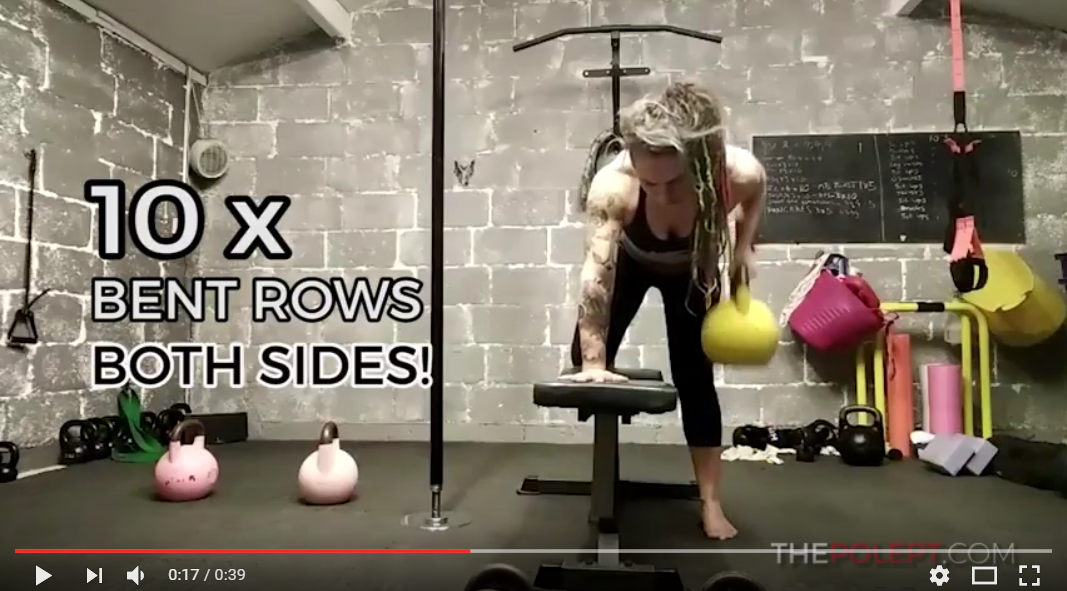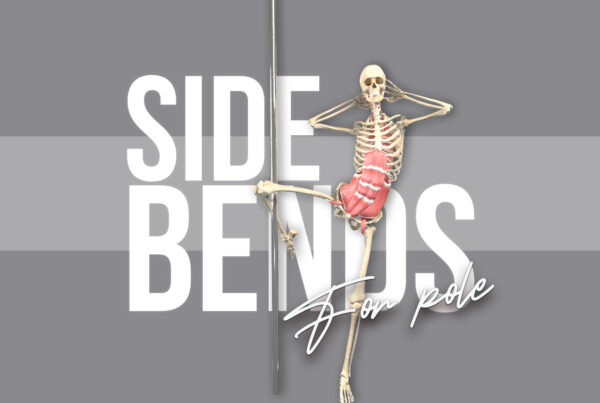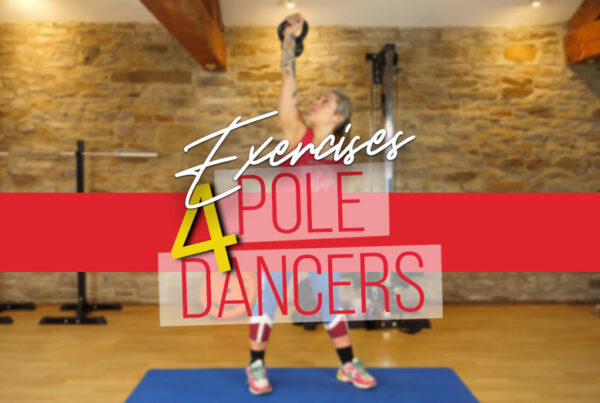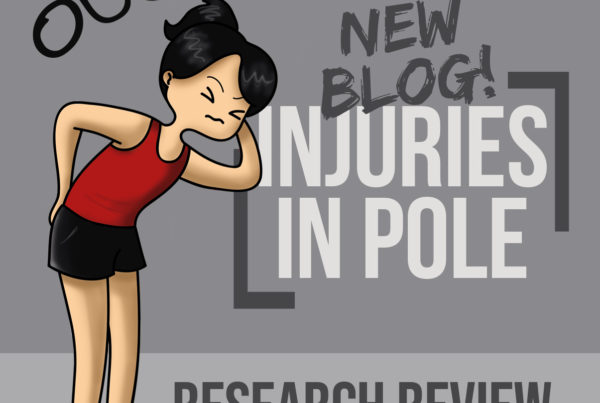It’s a quickie…
We all know how important strong shoulders are for pole, right?
✅ Knowing how to engage the shoulders correctly
✅ Strengthening the muscles responsible for shoulder stabilisation
✅ Training the opposing muscles that are often overlooked in our pole training
All of these things will make you a stronger, less injury-prone poler.
If you’re wondering exactly how to strengthen your shoulders in the gym in a way that will help you improve on the pole… welcome – you’ve come to the right place!
Here is one of my favourite ‘quickie’ dumbbell shoulder circuits for strong, healthy and functional pole shoulders!
Below you’ll find a breakdown of the workout, some technique guidance on each exercise as well as the reasons why I’ve chosen these specific movements for my pole dancer shoulder circuit.
The circuit only takes between 15 and 20 minutes, so it’s great to add onto the end of a training session, or you can do it as a stand alone workout. Enjoy!
Shoulder circuit for pole dancers – the warm up
Make sure you’re warmed up first! A good warm up for this workout would include 6 to 10 minutes of cardiovascular work (this can be running, rowing, skipping, dancing… basically, anything that gets your heart rate up!) followed by some mobility warm up drills for your shoulders like shoulder rolls, shoulder rotations, band exercises for the rotator cuffs and some thoracic spine rotation movements.
The circuit
When you’re ready to rock, you’re going to do 8 to 10 reps of each of the following exercises, except the pull up negative for which you’ll just do 5 reps, with no to little rest between each exercise. After one set, rest for a minute or two then repeat the whole thing twice more, to make 3 sets in total.
- Seated rear delt flys
- Bent rows
- Overhead press
- Pull up negatives
- Press up
Shoulder circuit for pole dancers – the exercises
1. Seated rear delt flys
As I explained in my muscle imbalance post, we tend to overuse our pec muscles in pole training and neglect our poor old upper backs. This leads to tight pecs and weak upper back muscles, which can cause postural issues (rounding of the shoulders), making us more vulnerable to injury as well as affecting our strength and performance on the pole.
The reverse fly is an awesome upper-mid back exercise to help combat this imbalance, create more balanced strength in the upper body and help to reduce injury risk.
2. Bent rows
Horizontal rows again help to strengthen the upper back and address common muscle imbalance issues in pole, focusing more on the rhomboid muscle in the middle of the back which is also important for scapula retraction and that all important shoulder stabilisation as well as the lats which we use for all that pulling we do on the pole! I would progress these to suspension trainer rows and then to one-armed suspension trainer rows for more experienced gymer/polers.
3. Kneeling windmill
We do a lot of overhead pulling on the pole (basically every spin involves pulling from overhead). The overhead press is a great counterbalance to all that pulling, helping to balance our strength in a more shoulder-healthy way.
We also do a lot of unilateral pulling and pushing on the pole. For example, every time we do a full bracket move, we’re pulling with one hand and pushing with the other. When we’re the ‘right way up’, our top hand is pulling from overhead and our bottom hand is pushing. But when we do the same moves inverted, for example, in an Ayesha, a butterfly or an inverted D, our top hand becomes our bottom hand and is now pushing (overhead), while the top hand is pulling. My point is that unilateral (ie one armed) overhead pushing strength is important, particularly for inverted pole moves. It’s a common weak point for many polers and overhead pressing (with dumbbells or kettlebells, rather than a bar) is a great way to strengthen that overhead pushing action in the gym.
My favourite starting point for this is a kneeling bottoms up kettlebell press. But I love to progress this to a kneeling windmill which also incorporates spinal rotation and additional stability work for the shoulders – perfect for pole dancers!
4. Pull up negatives
Of course, we need to be strong at pulling to do pole! One of my favourite vertical pulling progressions is the negative pull up – you can do these on a bar or rings. Go slowly with these and focus on technique!
5. Press up
You’ll notice that we’re aiming to create balance in our workout by including a combination of vertical pressing and pulling, with an additional focus on horizontal pulling to help focus on a common pole dancer weakness. But horizontal pushing is important, too – for balance and for pushing strength in itself, which we need on the pole, too!
If you can’t do a full press up, then instead of doing them on your knees, try this elevated version instead – it takes some of the weight out of your upperbody but retains the exact same position as the full press up, with the same muscular demands, just with a reduced load, so it’s a much better progression than the kneeling version which takes out a lot of the core work.
Before you hit the gym: If you have shoulder mobility issues, are experiencing shoulder pain or have a current or past injury, this workout is probably not right for you. Please see a physio or other medical professional to make sure you are doing what’s right for YOUR body!
If you want to start a regular shoulder care practice for your pole shoulders that will help you to reduce risk of injury and improve your shoulder strength and mobility so you can progress to more advanced moves – check out my online Pole Proof Shoulders training program! With all the nerdy pole theory, mobility and strength tests and exercise progressions you need for healthy pole shoulders! >>>Pole proof shoulders – the ultimate shoulder care and strength package for pole dancers!<<<
By its very nature, this workout is general and although the exercises have been chosen specifically for their cross-over benefits for polers, we are all different, with our own unique mobility limitations, training schedules and varying strength levels. If you’d like to create a personalised programme that takes into account your individual abilities and circumstances, check out my book – Strength and Conditioning for Pole – which includes shoulder mobility and strength tests and everything you need to create a balanced, customised training programme for pole.








